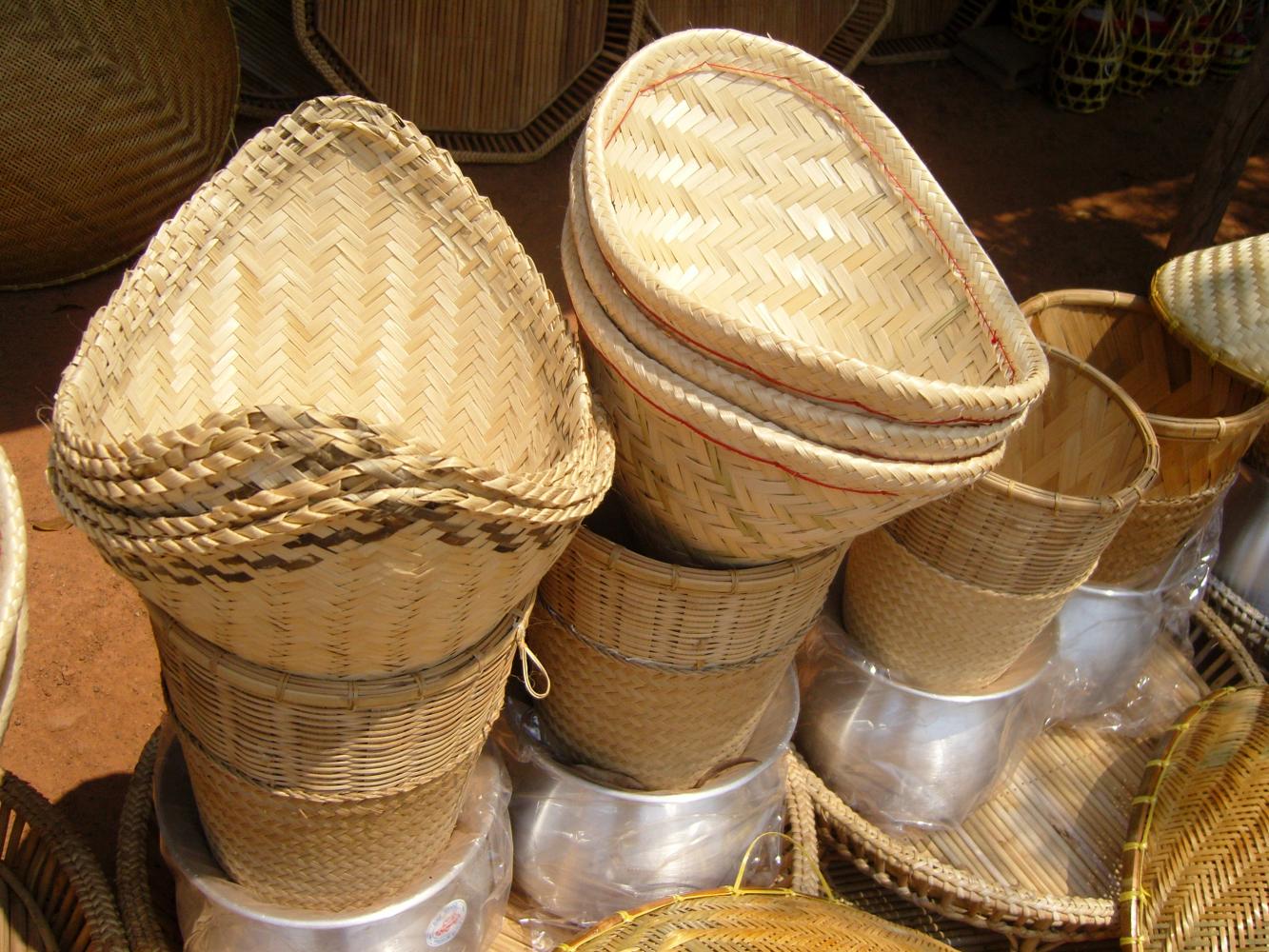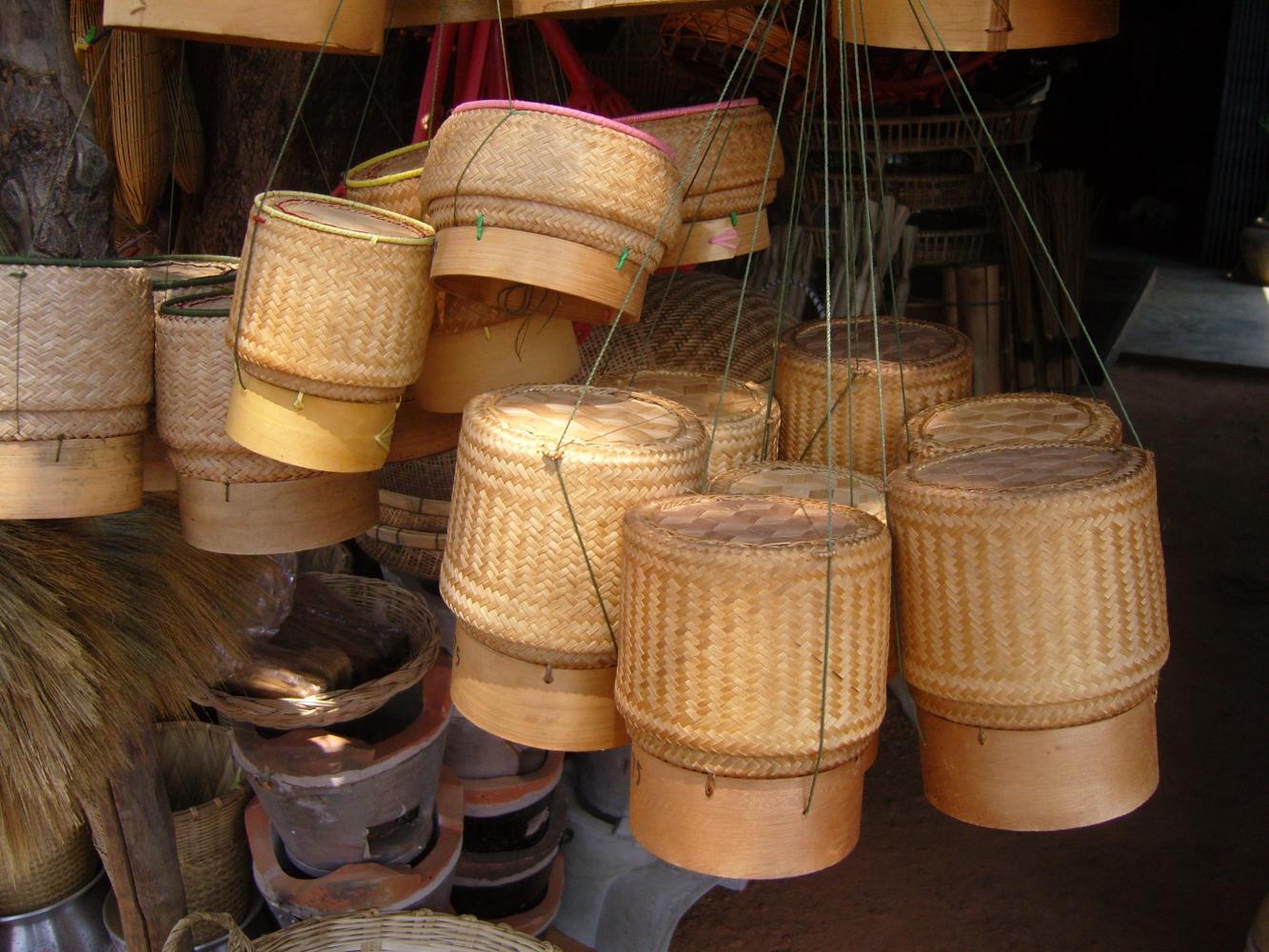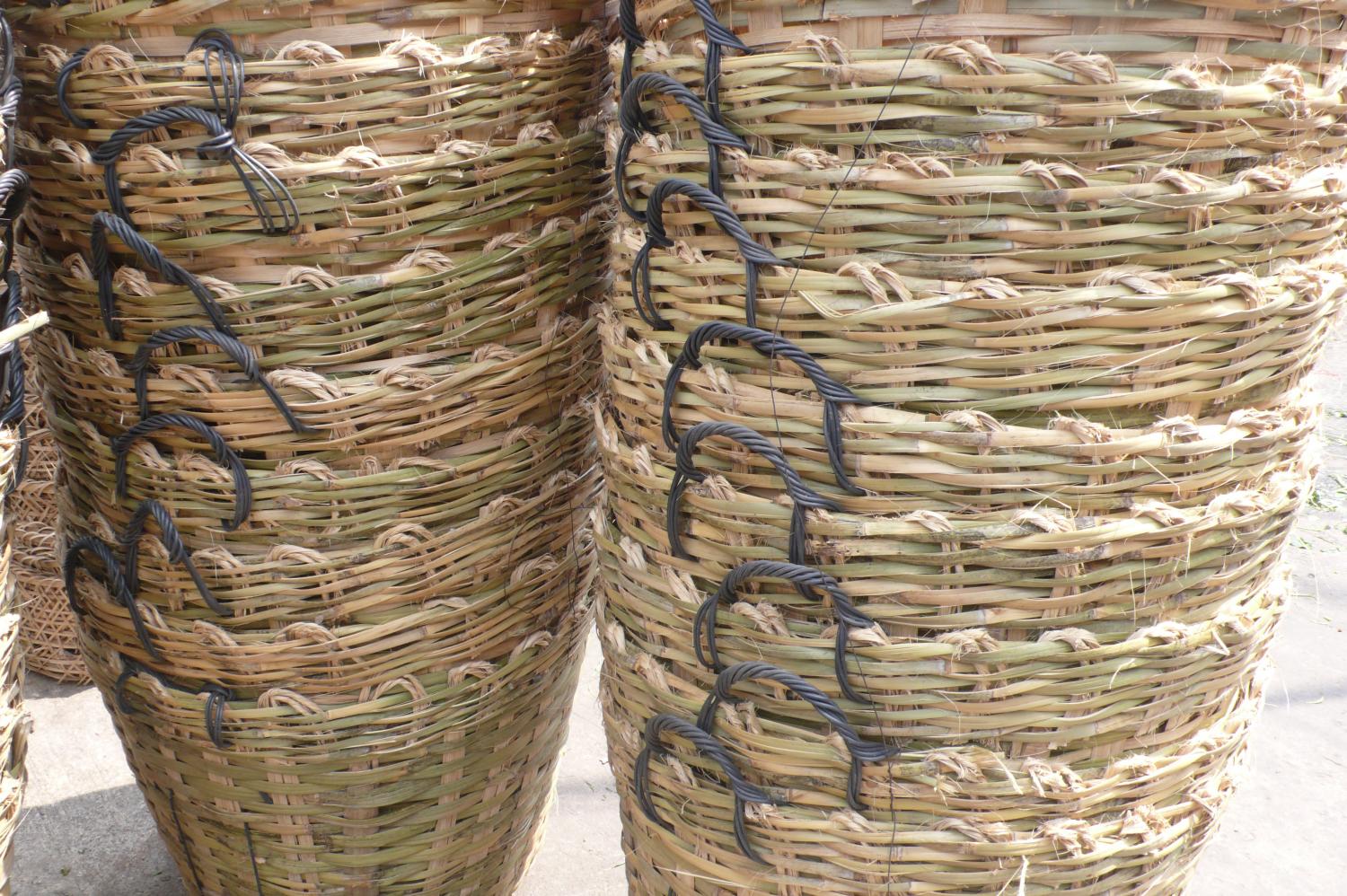Wickerwork is one of the oldest practices that mirror the lifestyle and traditions of Thai communities. It displays the creativity and craftsmanship of our ancestors in converting the raw materials available at hand into equipment so beautiful and functional that it remains in use to this day.
Basketry is a source of profound knowledge, greater than what one can find in books. Despite the wide range of products made from plastic and stainless steel available to us nowadays, woven tools remain practical and even essential in the everyday lives of many.
One of the most familiar and significant examples of Thai wickerwork can be found in Chanthaboon or Chanthaburi. Chanthaburi province is the largest hub of sedge or kok products in the country. In the olden days, every household would have had sua Chanthaboon mats, which were laid on the floors throughout the house: in the bedrooms, common rooms, kitchen and rest areas. The mats were available in all shapes and sizes, and were foldable, lightweight and durable. They could also be made into table mats, placemats and carryalls.

Containers for steamed mackerel must be made from bamboo.
Kok mats are now made in parts of Isan as well. But sua Chanthaboon are still the most popular, with new lines of products and designs being introduced regularly to attract buyers.
Northern hilltribe people make toke (raised trays) and small stools from woven rattan. In the past, their houses did not have raised floors, as the ground soil helped retain heat and keep the houses warm. The cooking area and stoves were all on the ground. Thus, they wove small stools to provide some convenience for the womenfolk, giving them something to sit on when cooking or stitching.

Sticky rice steamer pots and baskets. Suthon Sukphisit
They also wove rattan to make big toke for putting food and dishes on. Family members sat on small stools around the toke at mealtimes. Rattan is durable. The longer it is in use, the softer it becomes. Rattan toke and stools were once popular in Bangkok, which allowed the hilltribes to earn extra income. Nowadays, they are better off economically so they no longer make rattan toke and stools for sale, but still make them for their own use.
Bamboo containers are commonly used for steamed dishes like dim sum. Along the Andaman coast, having dim sum for breakfast is common. Mini bamboo baskets remain in use in most shops.

Sticky rice containers.
Stainless steel containers can never completely replace bamboo containers because they do not render the feel of authenticity. Traditional Chinese dishes deserve to be presented in the original form. Steamed buns just look more palatable when served in bamboo baskets. If there are two shops selling buns in the same area, with one using bamboo baskets and the other using stainless steel containers, I would wager that the bamboo one would attract far more customers.
Wickerwork is extremely important to the traditional lifestyles of Isan, especially food-related activities. People use bamboo strainers to filter boiled fermented fish liquid. A loosely woven bamboo cone called a huad is used to steam glutinous rice. When done, the rice is spread in a kradong (rice-winnowing basket) to cool down before being put in a bamboo container called a kratip. The kratip helps keep the rice warm. Kratip containers come in attractive designs and various shapes and sizes.

Bamboo baskets.
A lot of useful equipment such as fishing gear, chicken coops and cages can be woven. Bamboo basketry is best for this. Interestingly, you can find tools like this made in any region of the country sharing similar designs.
Some may feel that woven baskets are outdated, and prefer plastic bags or cloth bags for carrying groceries. However, woven baskets would still be the preferred option when going to the temple to make merit, where plastic baskets would look out of place.
There are countless woven items out there. They have long been part of our society and will remain useful in the future.

